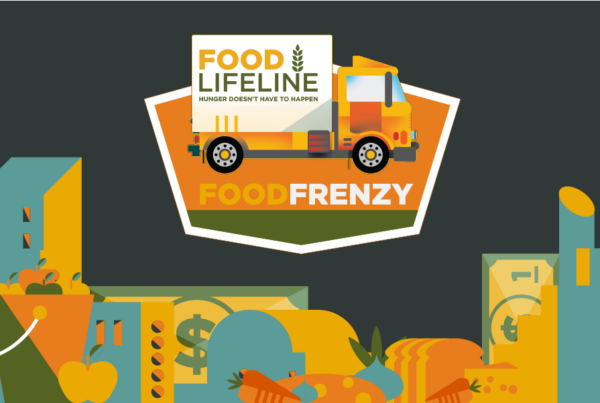
We know the quantity and variety of items available to order through Food Lifeline has been more limited recently. Reasons for this include driver shortages (a nation-wide trend), less excess food from the manufacturing industry, and seasonal trends in produce. To address this as quickly as possible, we have prioritized our staff time to dedicate significant hours on the road every week to build relationships with new, existing, and lapsed food donors.
Produce procurement is one of our primary areas of focus and the largest area of projected growth and opportunity. Through partnership with our state association, Feeding Washington, and our regional food bank partners in Oregon, eastern Washington, Idaho, California, Arizona, and Texas, we are working to build relationships that will infuse a variety of high quality produce items into western Washington. We hope to see our availability of food increase soon, but please contact us with your questions or concerns.
Here’s more information on nationwide trends in the for-profit food industry that affect the availability of donated foods:
- Agriculture sector: Fresh fruits and vegetables are the biggest opportunity for food banks to source nationwide, as farms report that anywhere from one-third to one-half of the products they grow never make it onto the plates of consumers. Excess agricultural products may exist because of over-production, aesthetic issues like size, shape or color, crop damage from weather-related events, or supply-chain issues. Donated produce can be sourced directly from farms or from shippers, storage facilities, or packing houses.
- Manufacturing and processing: Major manufacturers continue to refine their sourcing, production, inventory management, and supply chain practices to dramatically reduce waste at every step in their processes. While it was common in the past for food banks to be able to source surplus product from these donors, there is no forecast for growth in donated food sourcing from the manufacturing and processing sectors in the future; in fact, it is more likely that donations from these sectors will continue to decline as technology, industry consolidation, and just-in-time production reduce errors, surpluses, and inefficiencies.
- Wholesale: Donations from wholesalers continue to decline nationwide as corporations merge and consolidate, supply chains become more vertically integrated, and secondary and tertiary markets continue to emerge as sales alternatives to donation. Food banks that can develop strategies to take advantage of “opportunity buys” and one-off surpluses will be best positioned to receive product from this sector.
- Distribution centers: Donation streams are still viable from distribution centers, but overall volumes continue to decline, and product donated will increasingly be closer to code date as logistical practices become ever more sophisticated. Opportunities will continue to exist for donations of smaller product lots, seasonal products, test products, and less nutritious shelf-stable items such as snack foods and beverages, which are less valuable to food banks because of their lack of nutritional value.
- Retail: Donations from the retail sector continue to be a moderate growth opportunity as more retailers join formal retail pick-up programs such as Grocery Rescue. Food banks can maximize product availability by developing deeper relationships with corporate offices of retail partners to ensure that every possible category of product is included in donation programs. Ongoing education at the store level will continue to be a critical factor in store performance, quality assurance, and adherence to program standards. Additional opportunities exist within the retail sector to drive interest in in-store promotions, engaging customers in our cause, and providing access to both food and funds.
- Hospitality: Quick Service Restaurants (QSR) are increasingly showing interest in developing standardized donation programs as customer awareness of food waste grows and impacts brand loyalty. Other donors in this sector would include restaurants, corner stores (7-11), institutional dining centers (hospitals and corporate cafeterias). These donation programs bring significant challenges to the nonprofit sector because they are expensive to operate and produce smaller volumes of donated product. Some of the food to be donated from this sector is non-nutritious; much is prepared and difficult to safely handle. On the other hand, these programs can be of significant value if flexible, food-safe, and efficient program-operating models can be developed. Technology platforms are an emerging solution to facilitate donations either directly to local agencies or eventually directly to end users (clients), but there is still much learning to do in this space before these platforms can be applied broadly and effectively.





